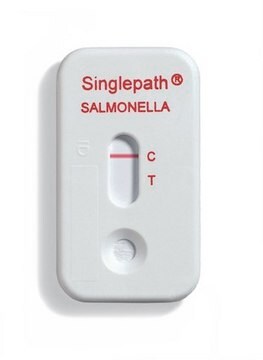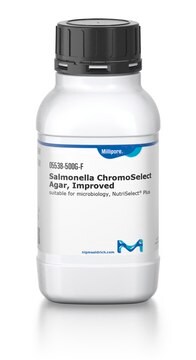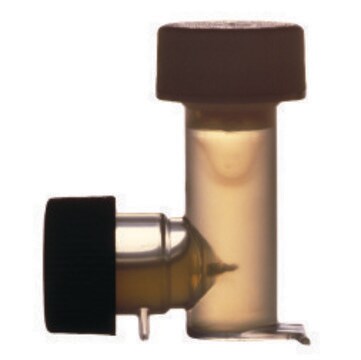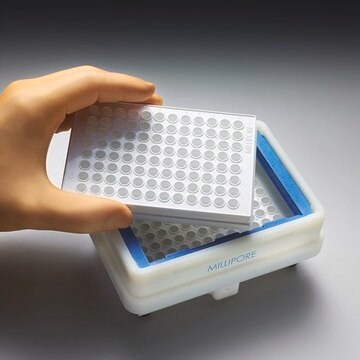55662
Hybriscan™ D kit
Salmonella, suitable for food and beverages, microbiology and in situ hybriziation
Synonym(e):
Salmonella HybriScan™D, FastScan Salmonella
About This Item
Empfohlene Produkte
product name
HybriScan™D Salmonella, suitable for microbiology
Methode(n)
microbe id | in situ hybriziation: suitable
Anwendung(en)
food and beverages
microbiology
Lagertemp.
2-8°C
Eignung
Salmonella spp.
Allgemeine Beschreibung
Leistungsmerkmale und Vorteile
Rechtliche Hinweise
Signalwort
Danger
Gefahreneinstufungen
Acute Tox. 3 Inhalation - Acute Tox. 4 Dermal - Acute Tox. 4 Oral - Carc. 1B - Eye Dam. 1 - Met. Corr. 1 - Muta. 2 - Resp. Sens. 1 - Skin Corr. 1A - Skin Sens. 1 - STOT SE 3
Zielorgane
Respiratory system
Lagerklassenschlüssel
6.1C - Combustible acute toxic Cat.3 / toxic compounds or compounds which causing chronic effects
Flammpunkt (°F)
Not applicable
Flammpunkt (°C)
Not applicable
Hier finden Sie alle aktuellen Versionen:
Analysenzertifikate (COA)
Leider sind derzeit keine COAs für dieses Produkt online verfügbar.
Wenn Sie Hilfe benötigen, wenden Sie sich bitte an Kundensupport
Besitzen Sie dieses Produkt bereits?
In der Dokumentenbibliothek finden Sie die Dokumentation zu den Produkten, die Sie kürzlich erworben haben.
Kunden haben sich ebenfalls angesehen
Artikel
Fast molecular screening of beverage, water, wastewater and food for microorganisms
Salmonella contamination is the second leading cause of food-borne illness worldwide. Controlling outbreaks of Salmonella is an important task for food regulators, restaurants and the food industry in general. The Salmonella family includes over 2,300 serotypes of bacteria, but two types, Salmonella enteritidis and Salmonella typhimurium, are responsible for about half of all human infections. Most outbreaks of Salmonella are traced back to dairy, poultry and meat products, but Salmonella can grow on nearly any food. Chicken, eggs and their derivative products are particularly high risk.
Protokolle
Food-borne pathogens Salmonella is commonly evaluated in manufacturing of peanut butter and other food products.
Verwandter Inhalt
Fast molecular screening of beverage, water, wastewater and food for microorganisms
Unser Team von Wissenschaftlern verfügt über Erfahrung in allen Forschungsbereichen einschließlich Life Science, Materialwissenschaften, chemischer Synthese, Chromatographie, Analytik und vielen mehr..
Setzen Sie sich mit dem technischen Dienst in Verbindung.








